Restoring the system using Windows Server Backup
WSB allows you to restore from a backup both individual files and restore the entire system. Individual files can be restored from the Windows Server Backup GUI. Full System Restore is only available from the Windows Recovery Environment (WinRE). Access to WinRE is available on the Windows Server OS installation image. If it is impossible to start the OS normally, the system will automatically boot into WinRE.
Full system restore from a backup image on network storage
1. Connect to the server via IP-KVM (iDRAC, IPMI, iRMC) to get access to the server console.
2. Next, enter the Windows Recovery Environment using the Windows Server OS installation image. Connect the disk image to the server and boot from it (in different versions of IP-KVM there may be differences in the interface, but the mechanism is identical everywhere).
3. After booting from the disk, you will get to the first window for choosing the language and keyboard settings. Click Next
4. In the next step, select the option Repair your computer
5. In the next menu, select the Troubleshoot option

Now you have the option to use the Command Prompt if the backup image of the system is stored on network storage. If the system backup is located on a disk, then go to the System Image Recovery (Recover Windows using a specific system image file)
You will need to run several commands on the command line. Let's check the internet connection first.
Checking the network connection
Let's execute the commands in sequence:
wpeinit
ping google.com
If DHCP is enabled in the DC, then most likely the connection is available and ping will be successful. In this case, you can go to the Network Storage connection point
If the ping command showed no link, it means that you will need to configure the network connection manually.
Network Connection Setup
1. Before setting up, check the active and connected network interface:
netsh interface show interface
2. You will get a list of interfaces (there may be several). You will need to capture the name of the interface which is Enabled, Connected:

3. Before executing the next command, find out the network parameters of your server (this information is usually available in the order details in your hosting provider's personal account). You need the main IP address, mask and gateway. Setting up the interface:
netsh interface ip set address name="Ethernet" static 192.168.0.115 255.255.255.0 192.168.0.1
name=”” - this is the name of the interface we learned earlier
192.168.0.115 - main server IP (example)
255.255.255.0 - netmask (example)
192.168.0.1 - gateway (example)
4. Next, add the Google dns server with the command:
netsh interface ip set dnsserver "Ethernet" static 8.8.8.8
5. Use the ping google.com command to check if you are connected to the network (see the screenshot of a successful ping above).
Connecting the network storage to the server
Connect the repository with the command:
net use z: \\u114***.introserv.cloud\u114***
\\u114***.introserv.cloud\u114*** - network storage address, replace the string with your data.
You will be prompted to enter a name and password. Enter your current information. You should receive a success message:

Checking backups and full system restore
1. Check the availability of backups in the storage:
wbadmin get versions -backupTarget:\\u114***.introserv.cloud\u114***

You are interested in the Version identifier strings. In the example, you see that you have a full system backup from 09/08/2023 20:10
Remember this information in the format in which you received it.
You have 2 recovery options available
- Restoring the entire system with all partitions on disks:
wbadmin start sysrecovery -version:08/09/2023-20:10 -backupTarget:\\u114***.introserv.cloud\u114*** -restoreAllVolumes -recreateDisks
-backupTarget: points to your network storage
-version: points to the backup you have chosen
Option -restoreAllVolumes indicates that you want to restore all partitions
Option -recreateDisks specifies that the recovery tool should recreate the partitions (Note - this option will erase all data on the disks and write the data from the backup to the recreated partitions)

- Restoring only the system partition on which the OS is installed
Executed by the command:
wbadmin start sysrecovery -version:08/09/2023-20:10 -backupTarget:\\u114***.introserv.cloud\u114***
Full recovery of a system image located on one of the server disks
1. In the WinRE menu item in the Troubleshoot item, select the System Image Recovery item

The system will try to scan the server disks for full OS backups. The latest available recovery image will be offered. But you can select from the list if there are several (Select a system image):
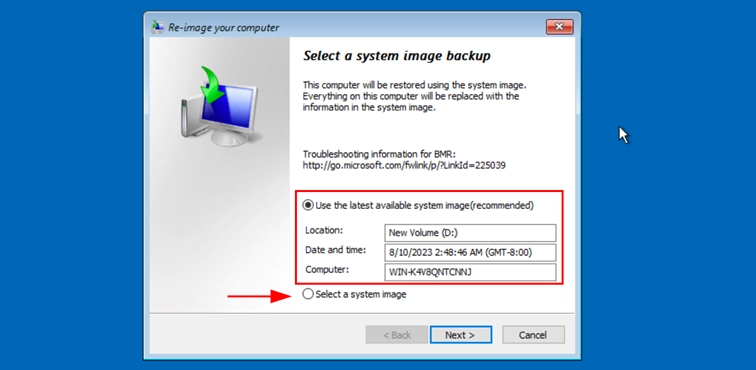
2. Click Next and get into the additional options menu:
Important! If you select the Format and repartition disks option, the utility will reformat the disks and partitions on the server to repeat the partitions from the backup. If this option is not enabled, the recovery utility will erase and replace data only in the system partition where the OS is installed. The Exclude disks… button with the Format and repartition disks option enabled will allow you to exclude disks from the reformatting process.
3. The disks and partitions affected by the recovery will be listed in the following window:
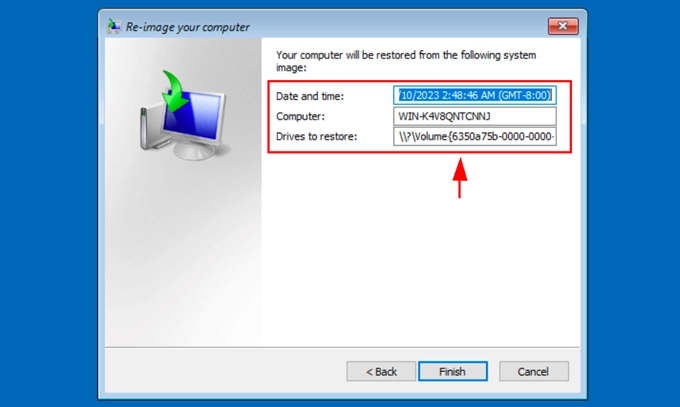
4. Click the Finish button and wait for the restoration to complete.
Restoring individual folders, partitions, or system state
This feature is available from the graphical interface of the Windows Server Backup component.
1. Launch the backup component: Start - Server Manager - Tools - Windows Server Backup and select Restore ...
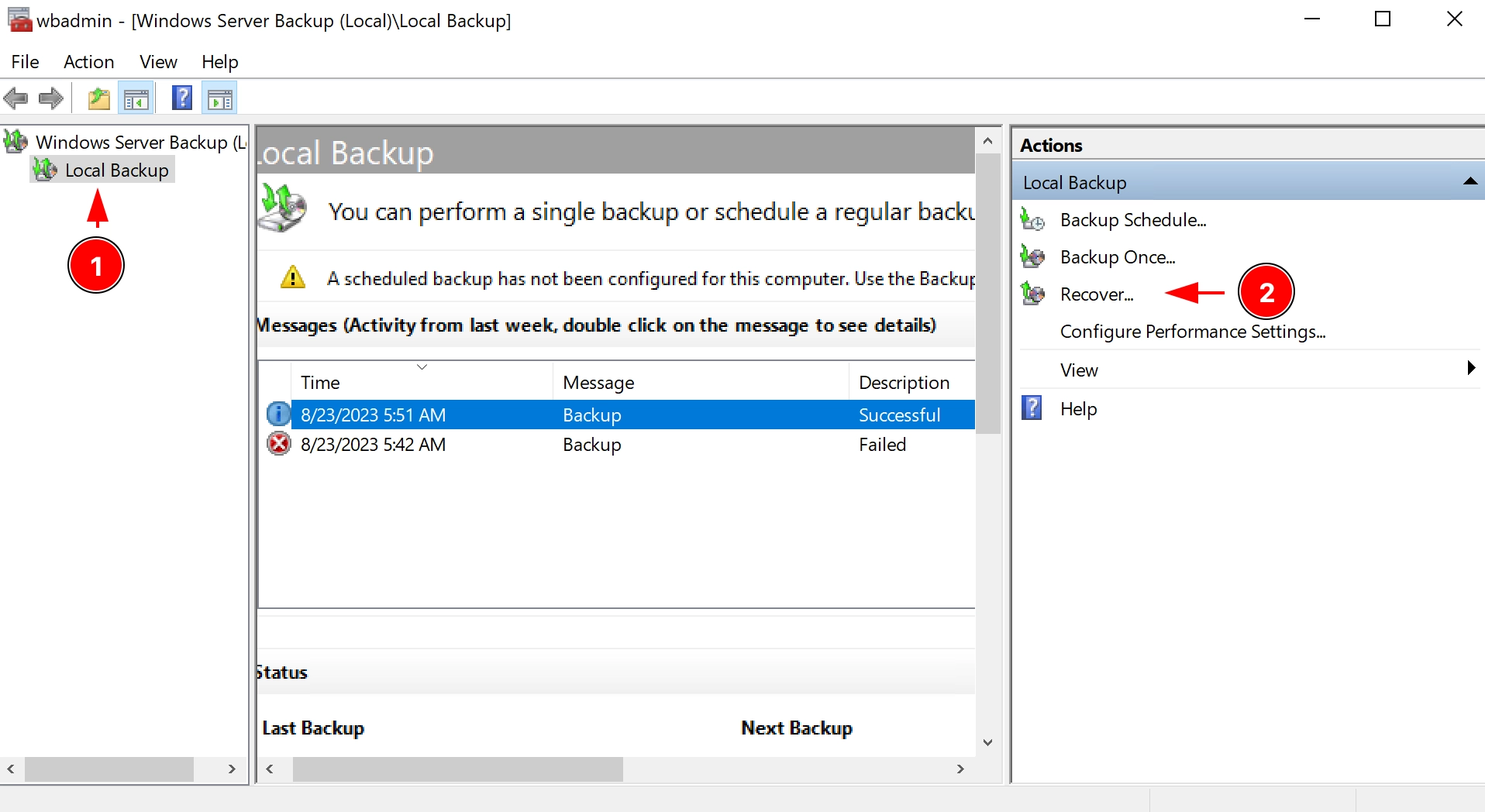
2. Choose where the backup is located - locally on the server or in another location, for example, on a network storage. In the example, consider the option with a backup on a network drive (Remote Shared Folder), select the second item:
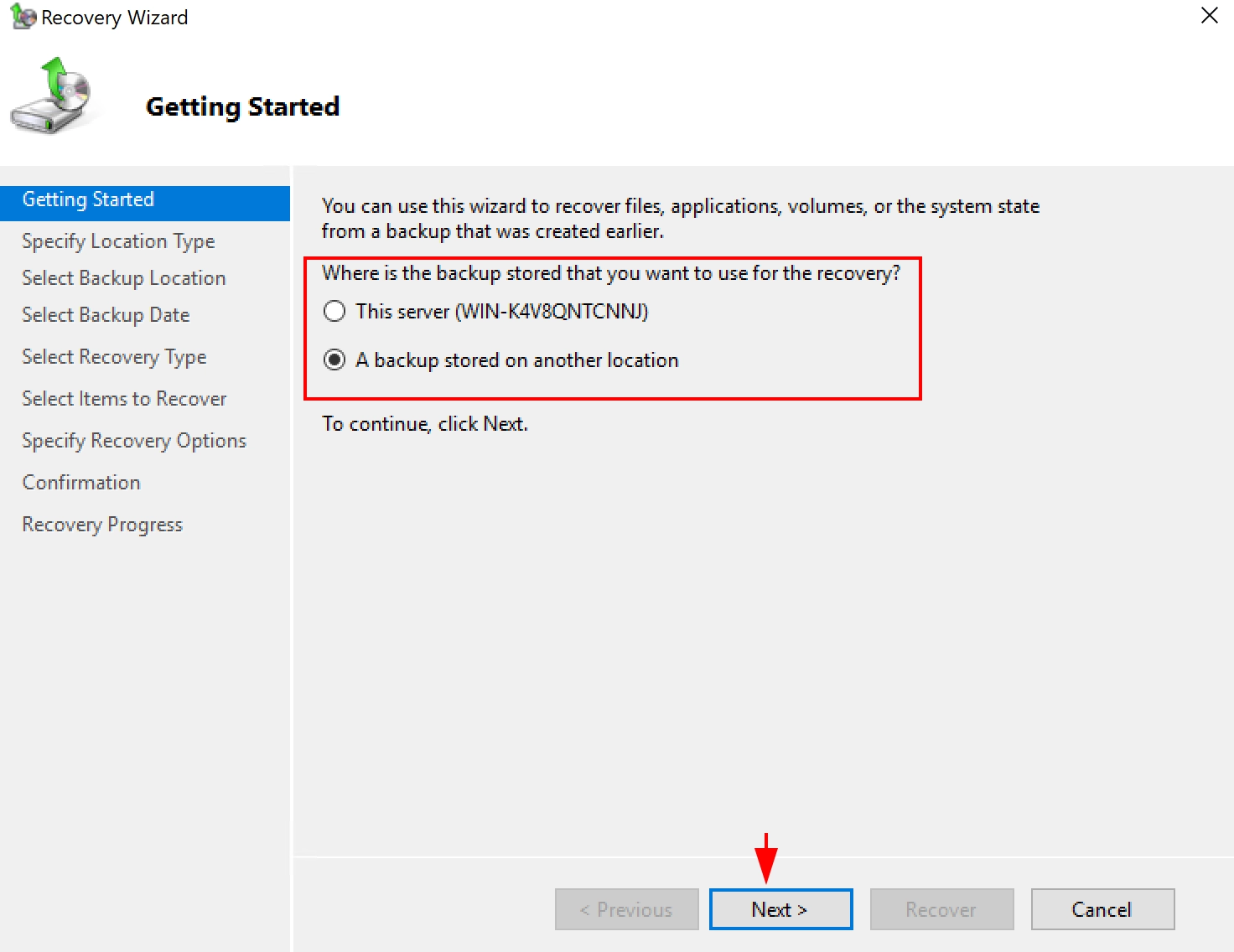
3. Enter the address of the network storage:
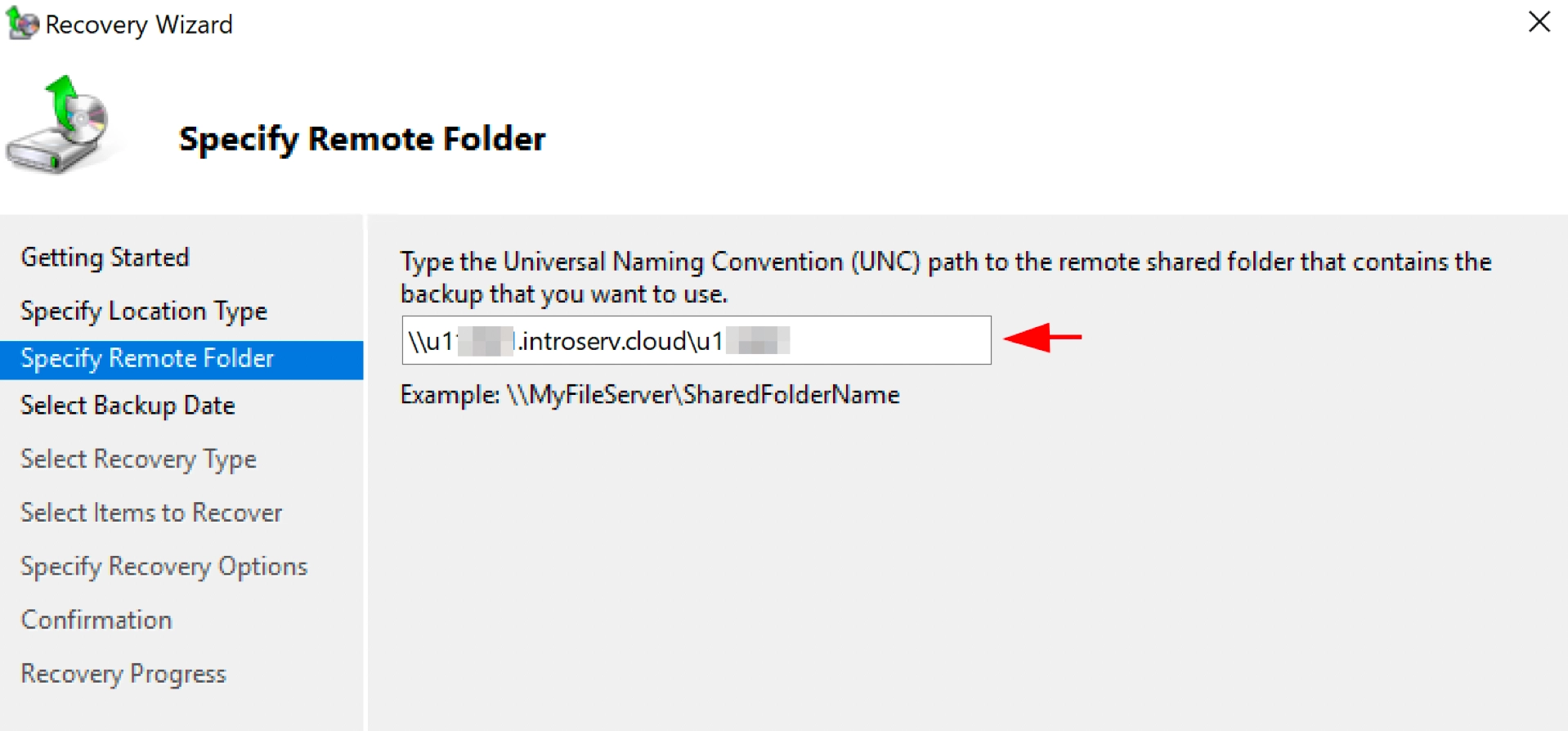
4. Select the date and time of the required backup:
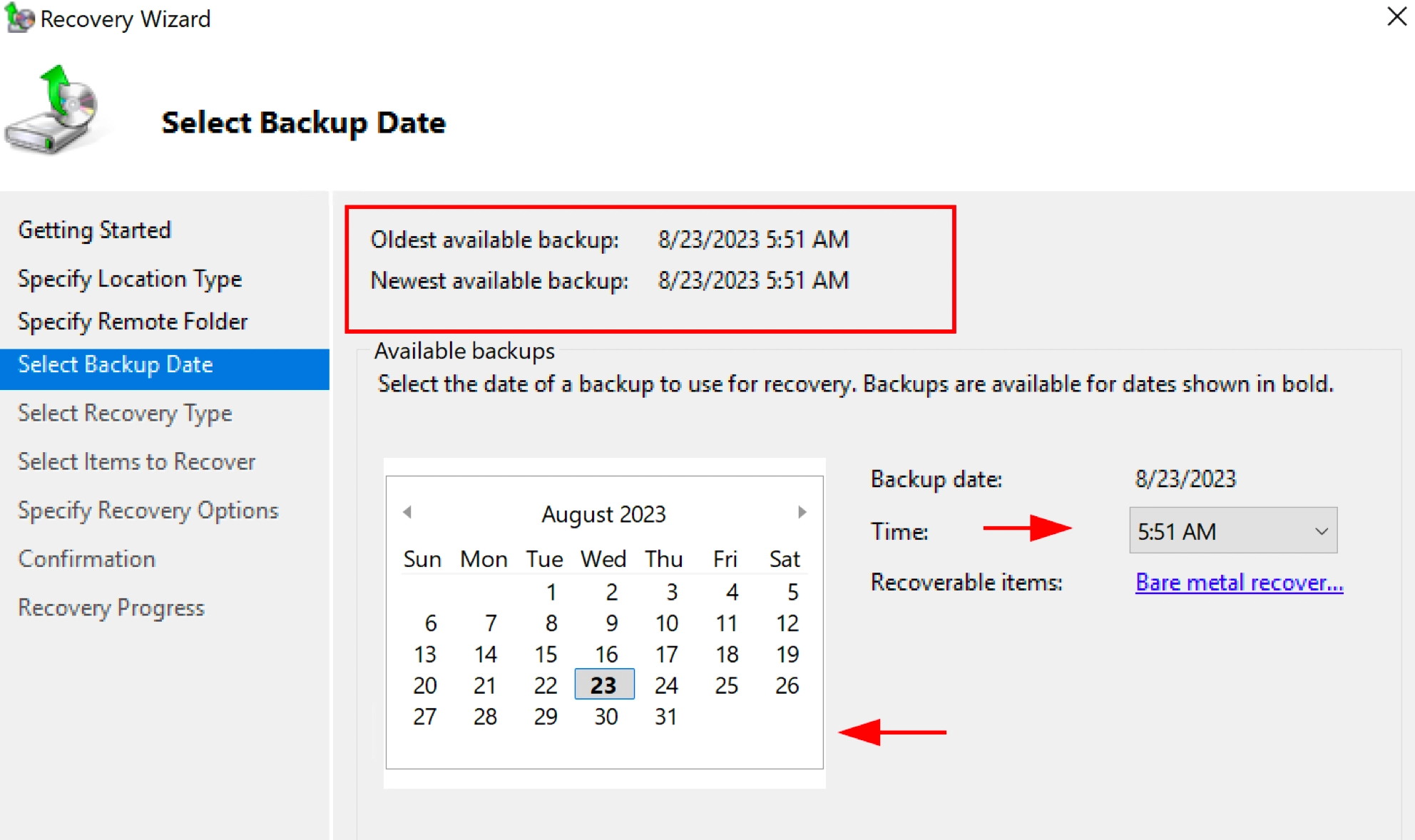
5. Next, select the Recovery type (The screenshot contains a description of each option). In the example, let's restore Files and folders:

6. Let's choose to restore desktop files:
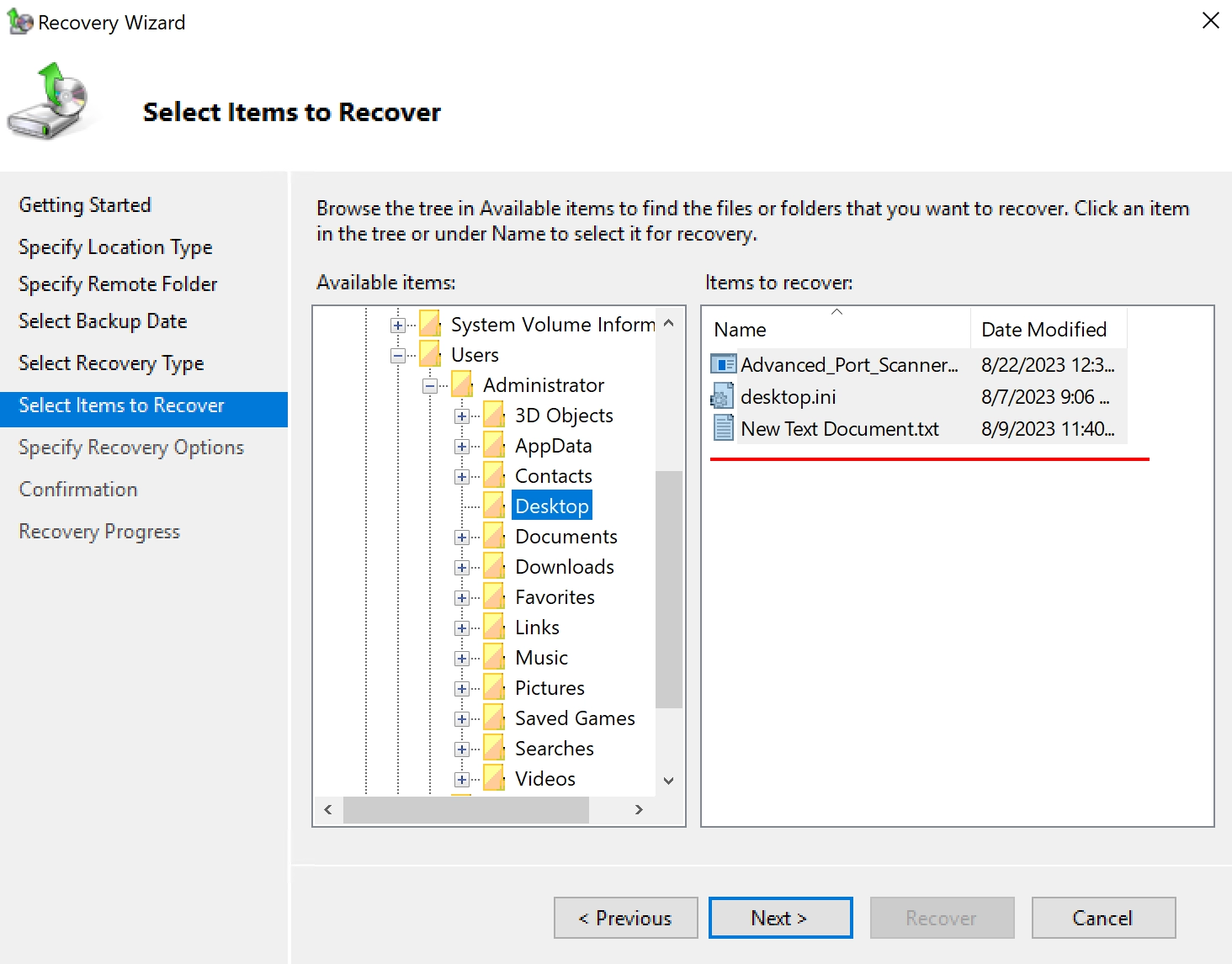
7. Set up recovery options:

8. Check and click Restore

We wait for completion and exit the utility. Other types of recovery work in a similar way.











































